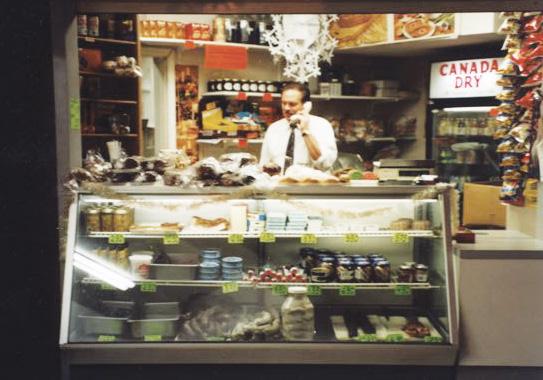
3 minute read
From the Archives: the Eesti Maja Kohvik (Estonian House Café)
VINCENT TEETSOV
In the sub-basement below Tartu College student residence, near the intersection of Bloor and Spadina in Toronto, one will find a treasure trove of artifacts and memories: the archive of the Estonian Studies Centre.
Advertisement
Looking through the archive’s shelves and storage units, you’ll find books, pamphlets, vinyl records, paintings, and reels of film. If you’re looking to research a particular topic, the staff at the Estonian Studies Centre can help you do so.
While it will be some time before anyone can look through the shelves; backed up digitally on the archive’s server (for easy online access), are thousands of photographs. Did you know that this is there for you to access personally?
Professional academics aren’t the only ones who can make use of an archive’s resources. Students, and enthusiasts of photography, art, genealogy, and literature will all find intriguing items as they sleuth around. Although, it always makes for a better search if you have an idea of what you’re looking for.
You might be interested to dip back and see a few photos of the kohvik of Toronto Eesti Maja. One particular photo, taken by Hannes Oja in 1990, shows Enno Õunapuu speaking on the telephone, with a very colourful, well-stocked shopfront. It was likely around Christmas time, as there’s a big paper snowflake hanging above his head. The top of the counter is heaped with dark bread. Bags of chips line the adjacent wall. Verivorstid (blood sausages) and jars of savoury goodies fill out the bottom, and a big old Canada Dry fridge is lit up in the back. There’s a nostalgic warmth and air of abundance in the photo.
There’s another from 1995, with Enno playing some pool with one of the kohvik’s patrons. This guest was going for the stripes, with the din of the TV above him. A snare drum and hi hat rest in the corner, waiting for their next player to play a tune under the light of the stained glass lamp. It seems like a place “where everybody knows your name.”
22 years after that, there was a Saturday crowd at the kohvik, chatting and relaxing at the tables. In one photo that appeared in Estonian Life in January 2017, three ladies look back at the camera while a gentleman discusses in animated gestures in the background. A slightly different configuration, but at its heart, people gathering together in each other’s company. Over all those years, how many gatherings have there been? Isn’t it amazing how a table, a few chairs, some snacks, and a drink can bring us so much meaning? This is just one example of the historic vignettes you can stumble upon in the digital archive.
In viewing these photos, I wonder how socializing like this will change in future generations. There are so many options of places to go in big cities like Toronto, and with that kind of selection, I for one notice a tendency to hop around and try new places. That, of course, makes it less likely that I will develop a local place that I always go to. The sociological phenomenon of the “local watering hole” may become more exclusive to small towns where there are less options.
If you want to search for something yourself, visit http:// www.ra.ee/apps/valiseesti/index. php/en, select the collection you want to search through, and then input specific keywords, location details, and more to narrow down the search. You can even input surnames and given names, to look for photos of specific people.

Photo: Hannes Oja










